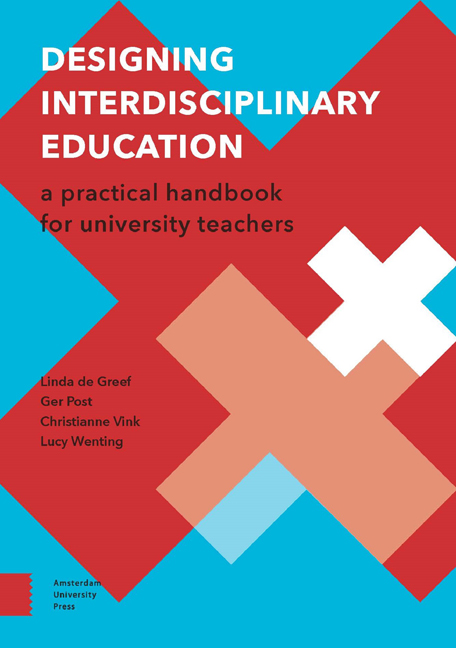Book contents
- Frontmatter
- Contents
- Acknowledgements
- 1 Introduction
- 2 An Overview of the Development Stages
- 3 Unravelling Interdisciplinary Understanding
- 4 Developing the Raw Sketch
- 5 Formulating Interdisciplinary Learning Outcomes
- 6 Embedding Integration in the Programme Design
- 7 Hiring and Engaging Faculty
- 8 Exploring the Teaching Philosophy and Didactic Methods
- 9 Assessment of Interdisciplinary Learning Outcomes
- 10 Interdisciplinary Teaching in Practice
- 11 Programme Assessment and Adjustment
- Appendices
- References
- Colophon
4 - Developing the Raw Sketch
- Frontmatter
- Contents
- Acknowledgements
- 1 Introduction
- 2 An Overview of the Development Stages
- 3 Unravelling Interdisciplinary Understanding
- 4 Developing the Raw Sketch
- 5 Formulating Interdisciplinary Learning Outcomes
- 6 Embedding Integration in the Programme Design
- 7 Hiring and Engaging Faculty
- 8 Exploring the Teaching Philosophy and Didactic Methods
- 9 Assessment of Interdisciplinary Learning Outcomes
- 10 Interdisciplinary Teaching in Practice
- 11 Programme Assessment and Adjustment
- Appendices
- References
- Colophon
Summary
‘Integration is troublesome because you need to acquire the bits before you can integrate, but once you’ve got the bits you need to be persuaded to see them in a different way.’
Paul Charles William Davies
Having a clear vision is the best foundation for sound educational development. In developing an interdisciplinary programme this is even more important, as this kind of study usually does not have specific research methods, theories, concepts, assumptions or technical language as binding factors as do disciplines (Menken & Keestra, 2016). A raw sketch can guide the analysis, design, development and implementation stages because it can aid decisions about whom the studies will target, what the intended learning outcomes are, and what the content and scope of the programme or course will be. Moreover, a robust and widely shared sketch or vision will make it clear to all stakeholders how they can contribute.
Drafting the vision
In order to draft a raw sketch of a new programme or course, it is crucial for some degree of consensus to exist on a number of core issues. For example, given that there is an abundance of ambiguous terms and various definitions and ideas of interdisciplinary study programmes, it is wise to have some fundamental agreement on what is meant by interdisciplinarity. Spend some time clarifying what each member of the development team means by interdisciplinary education. The definitions and activity in chapter 3 can guide these discussions. Other issues that should be addressed within the development team include the motivation for taking an interdisciplinary approach, the scope of the new interdisciplinary programme, and relevant national and international quality standards.
Key advice 5
Link the idea to broader institutional initiatives
Take some time with the development team to identify developments within your college or university that have led to the recognition that a shift towards a more interdisciplinary approach in education is needed. These developments may have to do with financial incentives that result from decreasing numbers of students in discipline-centred programmes or the institution's ambition to distinguish itself from other universities. No matter how the new curriculum fits in with the plans of the institution, it pays off to make these links explicit.
- Type
- Chapter
- Information
- Designing Interdisciplinary EducationA Practical Handbook for University Teachers, pp. 43 - 55Publisher: Amsterdam University PressPrint publication year: 2017

